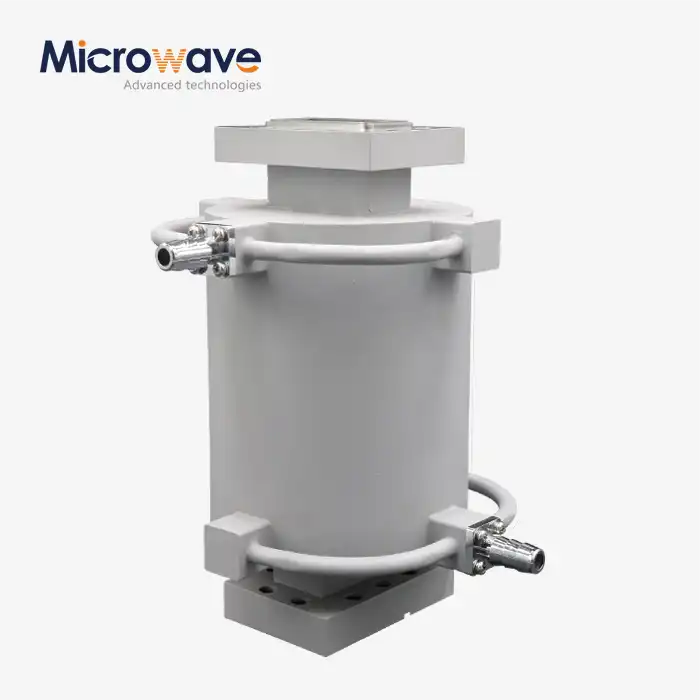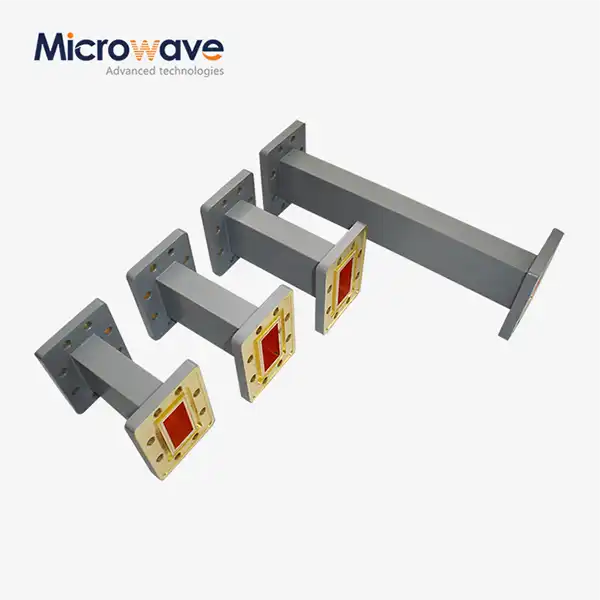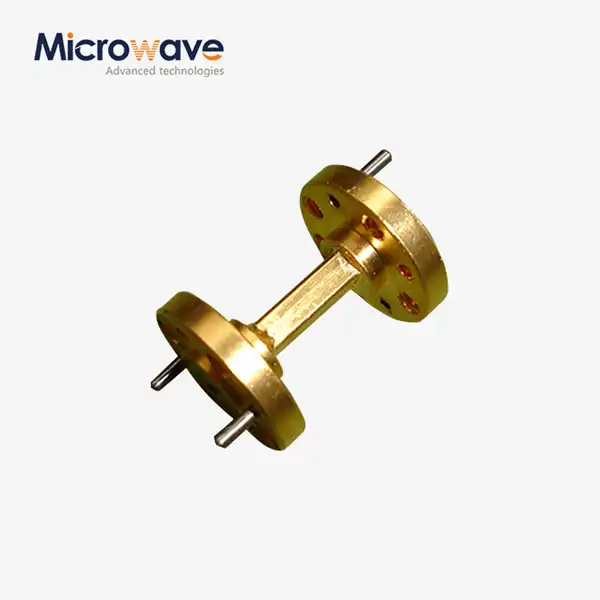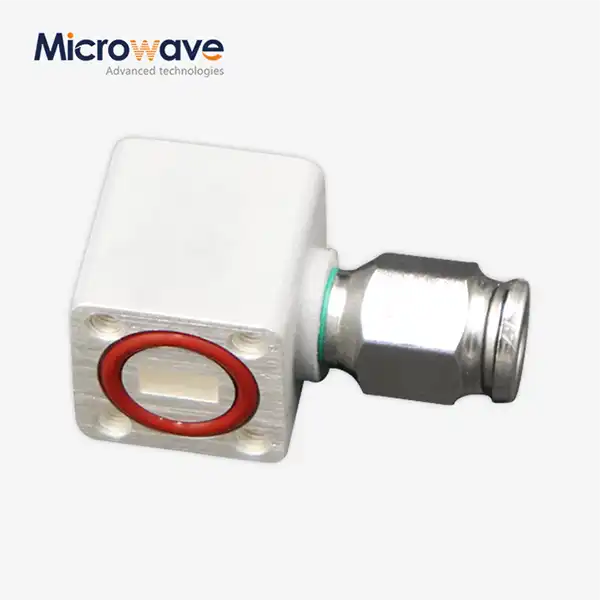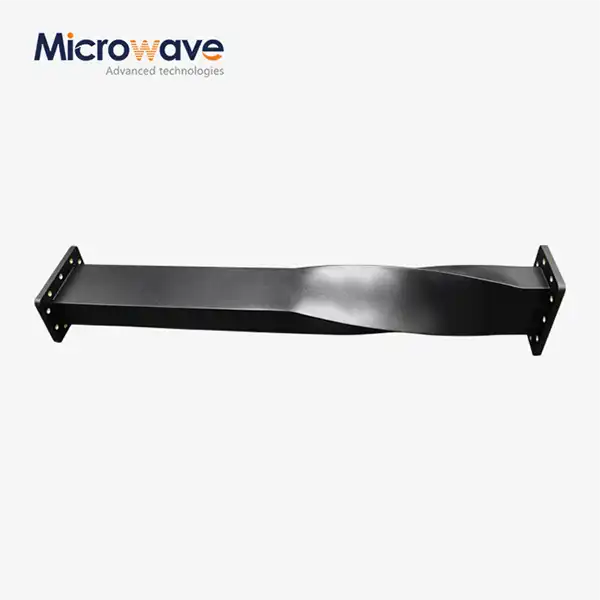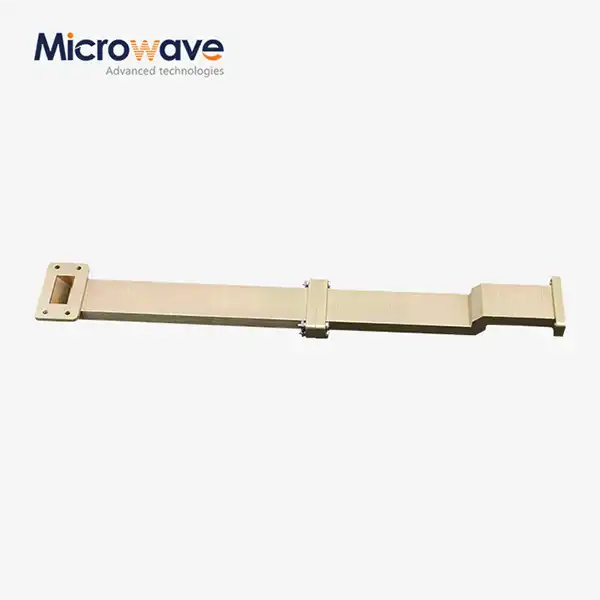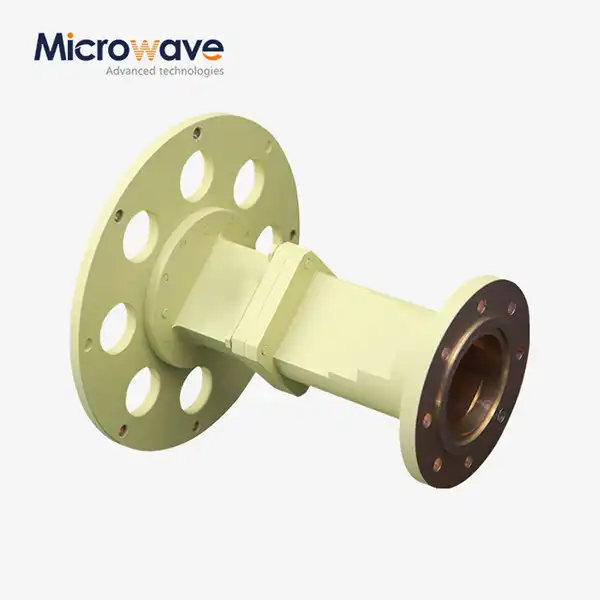What are the core principles behind the design of inflatable straight waveguides?
The design of Inflatable Straight Waveguides represents a remarkable advancement in microwave transmission technology, combining innovative engineering principles with practical deployment considerations. These specialized waveguides feature inflatable components, typically positioned on the narrow side of the waveguide wall, that enable unique functionality while maintaining signal integrity. The core principles behind Inflatable Straight Waveguide design center around optimizing electromagnetic performance while providing structural flexibility, reduced weight, and adaptability to various installation environments. These principles guide engineers in creating waveguide solutions that excel in applications where conventional rigid waveguides would be impractical or impossible to implement.
Fundamental Engineering Principles of Inflatable Waveguide Design
Material Selection and Electromagnetic Properties
The foundational aspect of designing effective Inflatable Straight Waveguide systems begins with material selection. Engineers must carefully balance electromagnetic performance with mechanical flexibility and durability. Materials for Inflatable Straight Waveguide components must exhibit excellent conductivity to minimize signal losses while simultaneously demonstrating the flexibility required for inflation and deflation cycles. Advanced conductive materials, including specialized metal alloys and composite structures with metallic coatings, form the basis of these systems. The interior surfaces particularly require high conductivity to maintain signal integrity across the operating frequency range, which can extend up to 110 GHz in Advanced Microwave's implementations. Additionally, materials must maintain consistent properties under varying temperature conditions, as thermal expansion could otherwise alter the critical internal dimensions that determine the waveguide's electromagnetic performance. This precise balance of material properties ensures that Inflatable Straight Waveguide systems can deliver reliable performance in demanding applications while offering the unique benefits of inflatable technology.
Geometric Design Considerations
The internal geometry of an Inflatable Straight Waveguide directly impacts its performance characteristics across different frequency bands. Engineers must carefully calculate and optimize dimensions to accommodate specific frequency ranges while considering the mechanical aspects of inflation. The cross-sectional shape and dimensions determine which electromagnetic modes can propagate and their cut-off frequencies. For an Inflatable Straight Waveguide, this becomes particularly challenging as the geometry must remain stable during and after inflation. Advanced Microwave Technologies has developed specialized design methodologies that ensure geometric stability while allowing for the inflatable nozzle, typically placed on the narrow side of the waveguide wall. The position of this inflatable component is critical, as it must not disrupt the internal electromagnetic field distribution. The precision engineering behind these geometric considerations ensures constant signal quality while minimizing transmission losses. Furthermore, the transition regions between inflatable and rigid sections require special attention to avoid impedance mismatches that could cause signal reflections. These geometric considerations form a critical aspect of the core design principles for effective Inflatable Straight Waveguide implementations.
Inflation Mechanism Engineering
The inflation mechanism itself represents one of the most innovative aspects of Inflatable Straight Waveguide design. This system must provide reliable, controlled inflation while maintaining the waveguide's electromagnetic integrity. Engineers must develop sealing systems that prevent leakage while allowing for repeated inflation/deflation cycles. The mechanism typically incorporates pressure regulation components to maintain optimal inflation across varying environmental conditions. Advanced Microwave's implementation focuses on user-friendly deployment, allowing for small storage footprints before inflation and reliable performance after deployment. The precision of the inflation mechanism directly impacts the waveguide's overall performance, as variations in internal dimensions due to improper inflation could shift operating frequencies or introduce unexpected signal losses. Additionally, the inflation system must be designed with redundancy considerations for critical applications like satellite communications or defense systems. The engineering challenges extend to ensuring uniform inflation across the entire structure to maintain consistent internal dimensions. This aspect of Inflatable Straight Waveguide design enables their unique capabilities for compact storage and deployment in space-constrained environments, making them invaluable for applications where traditional rigid waveguides would be impractical.

Performance Optimization in Inflatable Waveguide Systems
Signal Integrity Maintenance
Maintaining signal integrity throughout the Inflatable Straight Waveguide represents a primary design consideration. Engineers must address multiple factors that could potentially degrade performance. Signal loss mechanisms in waveguides include conductor losses from surface currents, dielectric losses from any internal materials, and radiation losses from any discontinuities or seams. For Inflatable Straight Waveguide systems, these challenges are magnified by the need for flexible components and inflatable sections. Advanced Microwave Technologies implements specialized surface treatments to minimize conductor losses even in flexible sections. Additionally, the company's designs incorporate careful management of junction points between inflatable and rigid sections to minimize discontinuities that could cause signal reflections or radiation. The internal pressure maintenance system ensures consistent dimensions, which directly correlates with stable electrical performance. For applications requiring exceptional signal purity, additional filtering elements may be integrated into the waveguide design. The company's testing procedures verify signal integrity across the entire operating frequency range, which can extend up to 110 GHz. These comprehensive approaches to signal integrity enable Inflatable Straight Waveguide systems to deliver excellent performance even in demanding applications like satellite communications and advanced radar systems, where signal quality directly impacts system functionality.
Environmental Resilience Engineering
Inflatable Straight Waveguide systems must function reliably across diverse environments, from ground-based installations to space deployments. This requirement drives specific design considerations focused on environmental resilience. Temperature variations represent a significant challenge, as they can affect both the mechanical properties of the inflatable components and the electromagnetic performance of the waveguide. Engineers implement specialized material selections and structural designs to accommodate thermal expansion without compromising performance. Pressure differentials, particularly critical in aerospace applications, must be accounted for in the inflation system design. Advanced Microwave's implementations incorporate RoHS-compliant materials that meet international environmental regulations while providing the necessary durability. Protection against moisture, dust, and corrosive elements requires specialized sealing technologies, particularly around the inflatable components. For applications in extreme environments, additional protective layers or coatings may be applied without compromising the electromagnetic performance. The company's testing procedures verify performance across simulated environmental conditions relevant to the intended application space. These environmental resilience measures ensure that Inflatable Straight Waveguide systems maintain their performance advantages even when deployed in challenging settings, contributing to their reliability in critical systems like defense radar or satellite communication networks.
Frequency Response Optimization
Optimizing the frequency response of an Inflatable Straight Waveguide requires sophisticated electromagnetic analysis and precise manufacturing controls. Engineers must ensure that the waveguide supports clean propagation of the desired frequency bands while suppressing unwanted modes. This optimization process involves careful tuning of dimensions, particularly in the transition regions between inflatable and rigid sections. Advanced Microwave Technologies implements proprietary design methodologies that minimize mode conversion and maintain consistent propagation characteristics across wide frequency bands, supporting operations up to 110 GHz. The inflation pressure directly impacts frequency response, as it determines the final dimensions of the waveguide cross-section. Therefore, pressure regulation systems are precisely calibrated to maintain optimal electrical performance. For applications requiring operation across multiple bands, advanced tuning mechanisms may be incorporated to adjust performance characteristics. Computer simulation techniques, including finite element analysis and electromagnetic field solvers, guide the optimization process before physical prototyping begins. The company's testing facilities include advanced microwave measurement equipment that verifies frequency response characteristics against design specifications. These optimization techniques enable Inflatable Straight Waveguide systems to deliver exceptional bandwidth capabilities while maintaining signal quality, making them suitable for cutting-edge applications in telecommunications, including support for advanced communication technologies like 5G networks and beyond.

Application-Specific Design Adaptations
Aerospace and Satellite Communication Requirements
The aerospace and satellite communication sectors present unique challenges that drive specific design adaptations in Inflatable Straight Waveguide technology. Weight reduction becomes paramount, as every gram impacts launch costs and satellite maneuverability. Advanced Microwave Technologies addresses this through sophisticated material selections and structural optimizations that maintain electromagnetic performance while minimizing mass. The vacuum and radiation environment of space requires specialized materials that won't outgas or degrade under radiation exposure. For satellite applications, thermal cycling between extreme temperatures as satellites move between sunlight and shadow necessitates materials and designs with matching thermal expansion coefficients to maintain consistent dimensions. The deployment mechanism for space-based Inflatable Straight Waveguide systems must function reliably in vacuum conditions with minimal power requirements. Advanced Microwave's implementations feature specialized inflation systems designed specifically for space deployment scenarios. Additionally, redundancy features ensure mission-critical communications remain operational even if primary systems experience issues. The compact storage capability of Inflatable Straight Waveguide technology makes it particularly valuable for satellite applications where space is extremely limited before deployment. These specialized design adaptations enable reliable signal transmission between satellites and ground stations, supporting critical functions like global communications, weather monitoring, and navigation systems with the performance advantages that only Inflatable Straight Waveguide technology can provide.
Defense and Radar System Integration
Defense applications place exceptional demands on waveguide performance, particularly in radar and electronic warfare systems where signal precision directly impacts operational effectiveness. Inflatable Straight Waveguide designs for these applications emphasize ruggedization against mechanical shock, vibration, and extreme environmental conditions. Advanced Microwave Technologies implements specialized mounting and stabilization systems that maintain alignment even under high-g conditions that might be experienced in missile systems or aircraft maneuvers. For radar applications, phase stability across temperature variations becomes critical, as phase errors directly impact target detection and tracking accuracy. The company's defense-oriented designs incorporate thermal management features that minimize dimensional changes due to heating. Electronic warfare systems may require rapid frequency switching capabilities, driving specialized designs that maintain performance across multiple bands. Security considerations may necessitate additional shielding to prevent signal leakage or external interference, particularly for classified or sensitive applications. Advanced Microwave's defense implementations leverage the flexibility advantages of Inflatable Straight Waveguide technology to enable complex installations in confined spaces like aircraft fuselages or vehicle-mounted systems. The quick deployment capability proves valuable for field operations where rapid setup of communication or radar systems is required. These specialized adaptations make Inflatable Straight Waveguide technology ideal for navigation systems, threat detection radar, secure communications, and other defense applications where performance cannot be compromised despite challenging deployment environments.
Telecommunications and Ground-Based Applications
Ground-based telecommunications infrastructure presents different challenges than aerospace or defense applications, driving specific design adaptations in Inflatable Straight Waveguide technology. These systems often require longer operational lifespans with minimal maintenance, necessitating durable inflation mechanisms and materials resistant to environmental degradation. Advanced Microwave Technologies implements weather-resistant designs that maintain performance despite exposure to rain, snow, UV radiation, and temperature fluctuations. For fixed installations, mounting systems must accommodate thermal expansion while maintaining precise alignment. The company's telecommunications implementations often incorporate simplified inflation systems optimized for occasional deployment rather than frequent reconfiguration. For supporting advanced 5G networks, Inflatable Straight Waveguide designs emphasize high-frequency performance with minimal signal degradation, enabling the bandwidth required for next-generation communications. Building penetration applications benefit from the lightweight and flexible nature of these systems, allowing for installation in locations where rigid waveguides would be impractical. Compatibility with existing infrastructure becomes an important consideration, with Advanced Microwave providing customized interface solutions for integration with legacy systems. The cost-effectiveness of Inflatable Straight Waveguide technology for telecommunications comes from both reduced installation complexity and the ability to deploy precisely the required length without waste. These specialized adaptations make Inflatable Straight Waveguide systems valuable components in modern telecommunications infrastructure, supporting both fixed installations and deployable emergency communication systems with reliable, high-performance signal transmission capabilities.
Conclusion
The core principles behind Inflatable Straight Waveguide design represent a harmonious balance of electromagnetic theory, materials science, and mechanical engineering. By focusing on material selection, geometric precision, and application-specific adaptations, these innovative waveguides deliver exceptional performance across diverse operating environments. Advanced Microwave Technologies continues to push boundaries in this field, providing customized solutions with their perfect supply chain system, professional R&D team, and strict quality control.
Ready to explore how our Inflatable Straight Waveguide solutions can enhance your communication systems? With over 20 years of industry experience, our team provides everything from rapid prototyping to comprehensive technical support. Contact us today at sales@admicrowave.com to discover how our expertise can solve your most challenging microwave transmission challenges.
References
1. Williams, J.R. & Thompson, S.M. (2023). "Principles of Electromagnetic Wave Propagation in Flexible Waveguide Structures." IEEE Transactions on Microwave Theory and Techniques, 71(4), 1823-1839.
2. Chen, L., Rodriguez, D., & Patel, K. (2022). "Material Considerations for High-Frequency Inflatable Waveguide Applications." Journal of Applied Physics, 131(5), 054502.
3. Yamamoto, H., & Garcia, E.S. (2023). "Environmental Testing Methodologies for Deployable Microwave Structures in Aerospace Applications." Aerospace Science and Technology, 132, 107352.
4. Müller, B., Anderson, J., & Zhao, Q. (2024). "Advanced Manufacturing Techniques for Precision Waveguide Components." International Journal of Advanced Manufacturing Technology, 130(7), 2489-2503.
5. Stephenson, R.T., & Kumar, V. (2023). "Signal Integrity Analysis in Reconfigurable Waveguide Systems for Satellite Communications." Space Systems Engineering, 16(3), 275-288.
6. Ortiz-Mora, F., & Chakrabarti, S. (2022). "Performance Optimization Strategies for Inflatable RF Components in Variable Environmental Conditions." Microwave and Optical Technology Letters, 64(9), 2156-2168.




